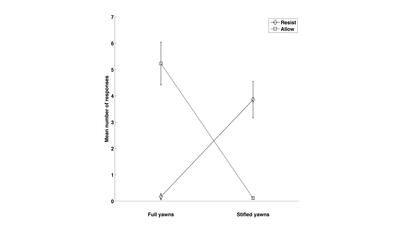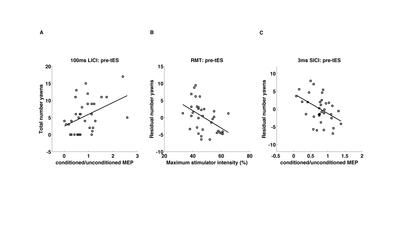A neural basis for contagious yawningTools Brown, Beverley J., Kim, Soyoung, Saunders, Hannah, Bachmann, Clarissa, Thompson, Jessica, Ropar, Danielle, Jackson, Stephen R. and Jackson, Georgina M. (2017) A neural basis for contagious yawning. Current Biology, 27 (17). pp. 2713-2717. ISSN 1879-0445
AbstractContagious yawning, in which yawning is triggered involuntarily when we observe another person yawn, is a common form of echophenomena—the automatic imitation of another’s words (echolalia) or actions (echopraxia) [1]. The neural basis for echophenomena is unknown; however, it has been proposed that it is linked to disinhibition of the human mirror-neuron system [1–4 ] and hyper-excitability of cortical motor areas [ 1 ]. We investigated the neural basis for contagious yawning using transcranial magnetic stimulation (TMS). Thirty-six adults viewed video clips that showed another individual yawning and, in separate blocks, were instructed to either resist yawning or allow themselves to yawn. Participants were videoed throughout and their yawns or stifled yawns were counted. We used TMS to quantify motor cortical excitability and physiological inhibition for each participant, and these measures were then used to predict the propensity for contagious yawning across participants. We demonstrate that instructions to resist yawning increase the urge to yawn and alter how yawns are expressed (i.e., full versus stifled yawns) but do not alter the individual propensity for contagious yawning. By contrast, TMS measures of cortical excitability and physiological inhibition were significant predictors of contagious yawning and accounted for approximately 50% of the variability in contagious yawning. These data demonstrate that individual variability in the propensity for contagious yawning is determined by cortical excitability and physiological inhibition in the primary motor cortex.
Actions (Archive Staff Only)
|

 Tools
Tools Tools
Tools![Figure 1 [thumbnail of Figure 1]](https://eprints.nottingham.ac.uk/44492/2.hassmallThumbnailVersion/Fig%201.jpg)

![Figure 2 [thumbnail of Figure 2]](https://eprints.nottingham.ac.uk/44492/3.hassmallThumbnailVersion/Echo2%20Fig%202.jpg)

![Figure 3 [thumbnail of Figure 3]](https://eprints.nottingham.ac.uk/44492/4.hassmallThumbnailVersion/Echo2%20Fig%203.jpg)

